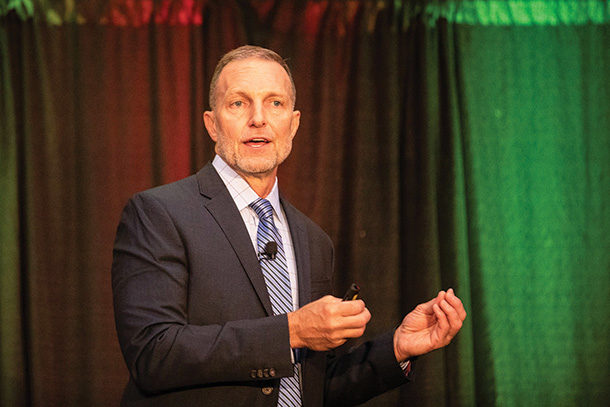Michael Uetz
Today’s protein consumer: Shifting trends, changing expectation
“How do you serve up the right product, at the right time, at the right place with the right messaging for that customer?”
Posing this question to producers at the 2021 Beef Improvement Federation (BIF) Symposium and Convention in Des Moines, Iowa, was Michael Uetz, managing principal with Midan Marketing, who stressed the necessity for tailoring beef marketing strategies to meet consumer needs.
“Our ‘why’ is about the cattle industry; it’s about working with anybody moving product from farm to fork,” Uetz said.
To better understand the connection between farm and fork, Uetz broke down today’s protein eaters into five categories based on generation. The meat segmentation categories explain each audience’s protein preferences, purchasing habits and insight into how producers can market their product to best resonate with the consumer group to whom they are selling.
While 71% of consumers identify as meat eaters, the percentage is down from 85% in 2019. “That doesn’t mean we’ve lost those folks who are flexitarian; it just means we need to work a little harder,” Uetz said. “They are looking for protein – it’s our job to make sure they choose meat.”
Uetz encouraged highlighting at least one nutritional benefit on product packaging, as 91% of shoppers want to see how selecting meat will impact their health. “We have the best source of protein any consumer can consume, but do we spotlight it on our packaging?” Uetz asked. “We need to lean into the health and wellness trend.”
Another emerging trend is online grocery shopping. According to Midan’s research, 57% of meat consumers purchased meat online during March 2021, and 91% of those consumers have ordered their meat or chicken from a local retailer’s website or app. “If we look at our gatekeepers to the consumer, it’s retailers, food service operators and now, direct-to-consumer providers,” Uetz said. “We’ve got to work with those partners to make sure they are representing our products the way they should be.”
Of all the sprouting trends, trust remains the most predominant “make-or-break” difference when it comes to producer-consumer relationships. “Increasing proactivity, transparency and direct communication with consumers are ways to gain their trust and support of the industry. “We need to always, no matter what it is we’re doing, be ready to pivot, change and create opportunities in adding value and delivering on the needs of the consumer,” Uetz said.
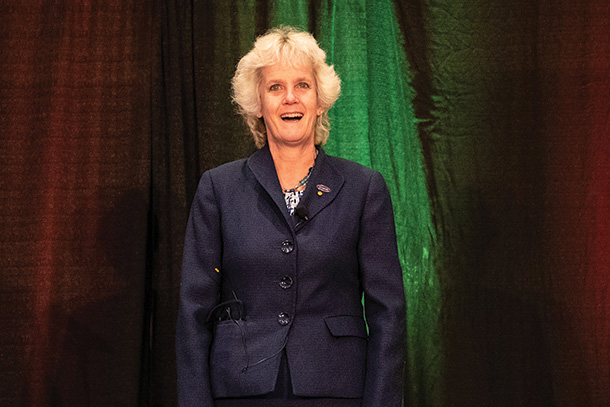 Photo courtesy of Kansas State University.
Photo courtesy of Kansas State University.
Alison Van Eenennaam
Gene editing: Today and in the future
Discussing developments and future plans for gene editing in cattle was Alison Van Eenennaam, a cooperative extension specialist in the department of animal science at the University of California – Davis.
“Genome editing is introducing a double-stranded break in the DNA double helix at a targeted location in the genome that you tell the genome editor to cut out,” Van Eenennaam said.
When a double-stranded break is created, the cell wants to stick the two ends back together through naturally occurring repair pathways. Traveling down the left-hand side of the pathway inactivates the gene, causing a ‘knock-out.’ An example of ‘knocking out’ would be inactivating the gene that makes pigs susceptible to porcine endogenous retroviruses (PERVs).
“Or you can ‘knock in,’ which means going down the right-hand pathway where you provide some sort of a donor template that has sequence similarities to either side of the double-stranded break,” Van Eenannaam said. “This can be as simple as moving an allele from one breed, like not growing horns in Angus, to Holsteins – or it could be introducing DNA from another species, like Bt corn.”
Van Eenennaam said the goal is to introduce variation into the next generation of breeding stock, which results in a homozygous, non-mosaic edited animal that has the intended alteration in the homozygous condition. Gene editing can be implemented in cattle breeding programs to deliver numerous outcomes based on the producer’s objectives, such as increasing lean muscle yield, creating heat tolerance or improving meat tenderness.
“I see editing as a cherry on top of the breeding sundae,” Van Eenennaam said. “It offers an opportunity to introduce useful alleles and potentially bring useful genetic variation from other breeds.”
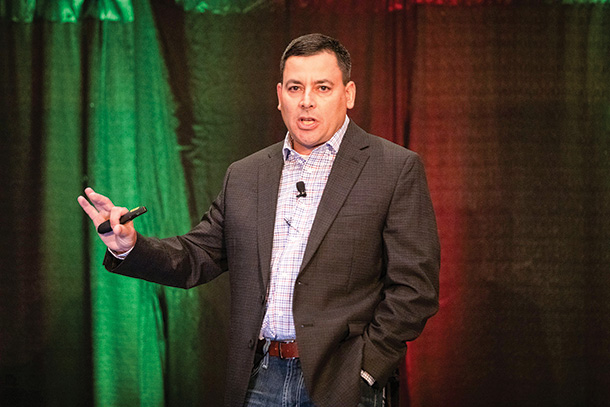 Photo courtesy of Kansas State University.
Photo courtesy of Kansas State University.
Justin Sexten
The role of technology in the beef industry
Covering the opportunities precision livestock farming offers the beef cattle industry was Justin Sexten, vice president of strategy for Performance Livestock Analytics, which provides a technology solution to cattle feeders across the world by integrating feed, health and financial data for over 2,200 operations.
Precision livestock farming allows producers to constantly monitor their animals for behaviors that deviate from their normal condition by using technology to detect signs of calving, estrus, lameness and illness. Real-time data creates predictable outcomes, meaning management decisions can be made with more confidence.
“As we get more and more animals together, it’s harder to put eyes on all of them,” Sexten said. “We used sensor-based technology to do these diagnostics because we can use the sensors to detect those deviations.”
Treating each animal as an individual instead of an average can increase that animal’s potential by making use of its genetics. “If you think about the beef production system as you move further down the line, do we optimize the animal for genetic potential or do we optimize them to the size of the truck that hauls them across the country?” Sexten asked. While the individual animal is an average component, each rarely represents the average. He says the goal of precision livestock farming is to take that single animal in a pen and manage to its needs.
“Overall that’s our opportunity – to make that animal more productive because I know more about all of the factors that are influencing it,” Sexten said.
Sexten said if the industry is going to use technology, the data it provides has to be relevant to everyone involved – the segment responsible for gathering and the segment responsible for transfer. He says the information must arrive in the next location of the supply chain in the right place and in a timely manner.
“At the end of the day, I think the greatest opportunity is the conveyance of information and potential to the next segment so they can act on it in a meaningful way,” Sexten says.
To listen to these presentations or to hear from other speakers during the event, visit the Beef Improvement Federation.
Quotes
We can sell more beef
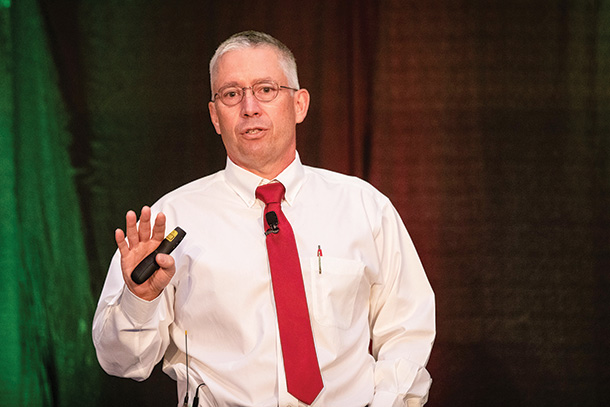 “We provide what man cannot live without. We can sell more beef, but it will take us learning together, communicating and implementing change.”
“We provide what man cannot live without. We can sell more beef, but it will take us learning together, communicating and implementing change.”
—Dr. Dan Thomson, Iowa State Department of Animal Science chair Photo courtesy of Kansas State University.
Lessons from other industries in genetics
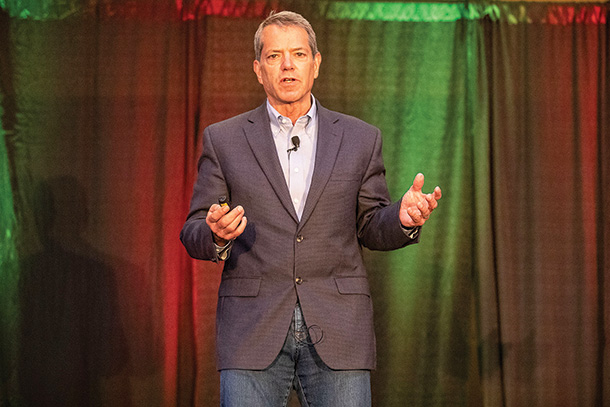 “I’m a believer in agriculture, I’m a believer in livestock production, and I’m a believer that is the solution to all of our rural economies.”
“I’m a believer in agriculture, I’m a believer in livestock production, and I’m a believer that is the solution to all of our rural economies.”
—Jim Pillen, owner of Pillen Family Farms
Photo courtesy of Kansas State University.
